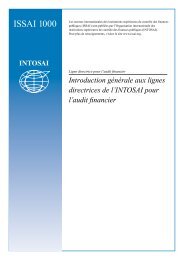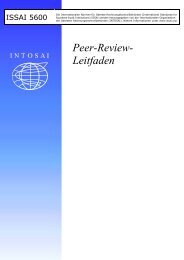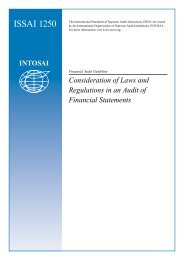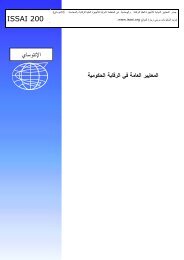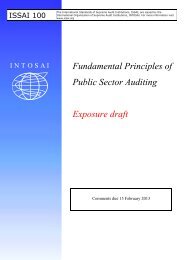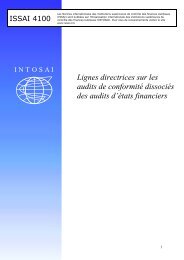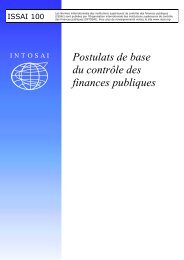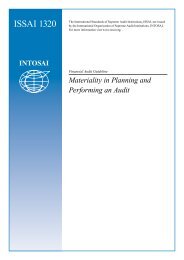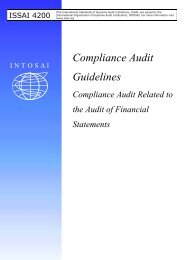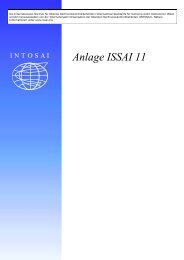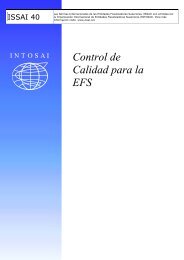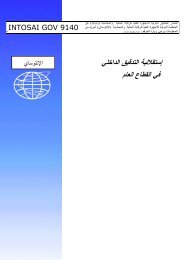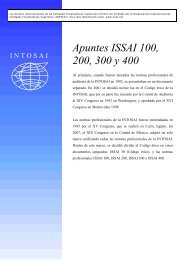ISSAI 1240
ISSAI 1240
ISSAI 1240
Create successful ePaper yourself
Turn your PDF publications into a flip-book with our unique Google optimized e-Paper software.
<strong>ISSAI</strong> <strong>1240</strong><br />
ISA 240<br />
THE AUDITOR’S RESPONSIBILITIES RELATING TO<br />
FRAUD IN AN AUDIT OF FINANCIAL STATEMENTS<br />
• Conducting interviews of personnel involved in areas where a risk of material<br />
misstatement due to fraud has been identified, to obtain their insights about the risk<br />
and whether, or how, controls address the risk.<br />
• When other independent auditors are auditing the financial statements of one or<br />
more subsidiaries, divisions or branches, discussing with them the extent of work<br />
necessary to be performed to address the assessed risk of material misstatement due<br />
to fraud resulting from transactions and activities among these components.<br />
• If the work of an expert becomes particularly significant with respect to a financial<br />
statement item for which the assessed risk of misstatement due to fraud is high,<br />
performing additional procedures relating to some or all of the expert’s<br />
assumptions, methods or findings to determine that the findings are not<br />
unreasonable, or engaging another expert for that purpose.<br />
• Performing audit procedures to analyze selected opening balance sheet accounts of<br />
previously audited financial statements to assess how certain issues involving<br />
accounting estimates and judgments, for example, an allowance for sales returns,<br />
were resolved with the benefit of hindsight.<br />
• Performing procedures on account or other reconciliations prepared by the entity,<br />
including considering reconciliations performed at interim periods.<br />
• Performing computer-assisted techniques, such as data mining to test for anomalies<br />
in a population.<br />
• Testing the integrity of computer-produced records and transactions.<br />
• Seeking additional audit evidence from sources outside of the entity being audited.<br />
Specific Responses—Misstatement Resulting from Fraudulent Financial<br />
Reporting<br />
Examples of responses to the auditor’s assessment of the risks of material misstatement<br />
due to fraudulent financial reporting are as follows:<br />
Revenue Recognition<br />
• Performing substantive analytical procedures relating to revenue using<br />
disaggregated data, for example, comparing revenue reported by month and by<br />
product line or business segment during the current reporting period with<br />
comparable prior periods. Computer-assisted audit techniques may be useful in<br />
identifying unusual or unexpected revenue relationships or transactions.<br />
• Confirming with customers certain relevant contract terms and the absence of side<br />
agreements, because the appropriate accounting often is influenced by such terms<br />
or agreements and basis for rebates or the period to which they relate are often<br />
poorly documented. For example, acceptance criteria, delivery and payment terms,<br />
the absence of future or continuing vendor obligations, the right to return the<br />
41<br />
276 The Auditor’s Responsibilities Relating to Fraud in an Audit of Financial Statements



